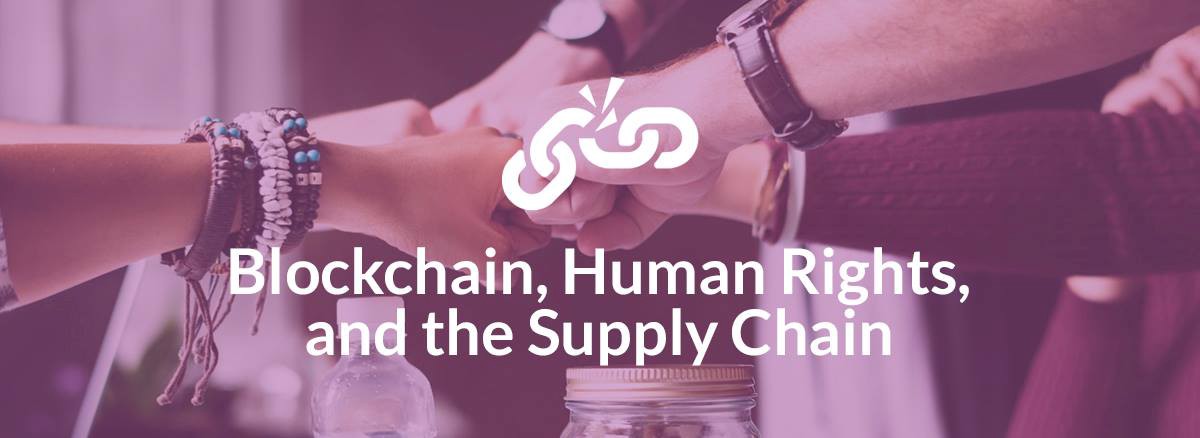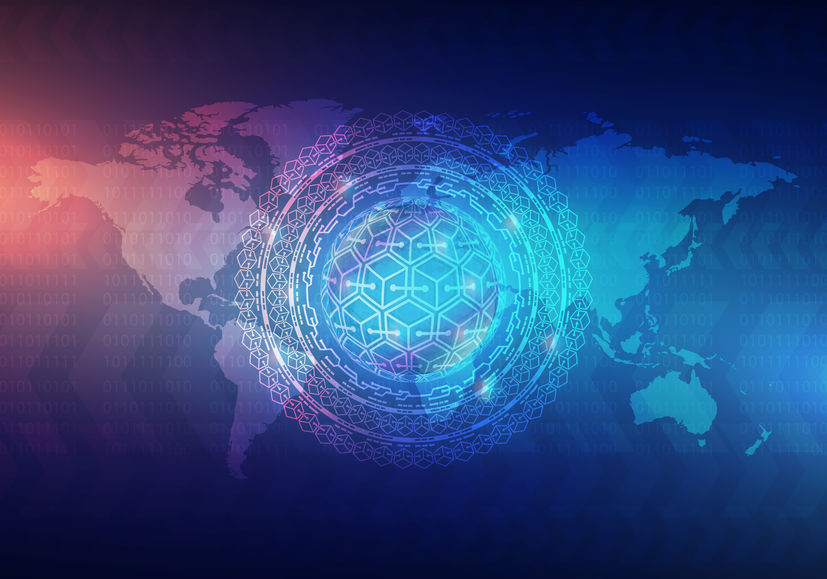By: Laura Marissa Cullell
Marketing & Operations Officer
How much do you know about the products you use or buy on a regular basis? Or where your cell phone parts come from? What about the people who made them? Or What materials were used and wasted?
The journey of a product is long and vast, and goes through several distributors, third parties, storage facilities, suppliers that handle anything from design, to sales, and productions. A product passes through so many different stages, and hands before making it onto store shelves. It’s incredibly difficult to truly track all of it properly, especially when corporate interests are at stake.
This article will look at the current landscape of the supply chain and explore the benefits of blockchain technology. We will see how the benefits of blockchain can help uphold human rights, but not without challenges.
The Current Landscape
It’s no surprise that even with the technology and resources we have available today, transparency in a chain of custody is still difficult to achieve. According to Mac McGary of the IBT Times, today’s supply chains comprise more than ⅔ of the world’s GDP, are often tainted with modern-day slavery and forced labour.
The complexities of global trade make it very difficult for both business and governments to understand just how a product is made. Stakeholders, and consumers are often held in the dark regarding the whole process and are not able to make informed decisions without access and complete transparency. This has resulted in unsafe working conditions, wasted materials, and environmental degradation in developing countries.
The 2013 Rana Plaza collapse in Bangladesh is just one example of this. This tragedy resulted in 1134 deaths and caused worldwide criticism which led to international demand for safer work conditions, a call to end modern day slavery, and forced several companies in the UK and around the world to audit their supply chain.
In her article, How Blockchain can prevent human rights violations in the supply chain, Alison McGuire believes that:
“As companies continue to globalize their business models, corporate labor abuses aren’t just becoming harder to identify, they’re becoming harder to enforce. Faced with new vendors, in new industries, in new regions of the world, company executives simply cannot conduct the due diligence necessary to keep up with the pace”.
This is where Blockchain comes in.
Blockchain Solutions in the Supply Chain
Blockchain’s main advantage lies in bringing provenance to the supply chain. This emerging technology has the potential to help make the Sustainable Development Goals a reality. By using blockchain and decentralizing the supply chain, it can:
- Decrease modern slavery and provide more transparency to the supply chain
- Increase Visibility of materials
- Authenticates against counterfeiting and fraudulent products
- Provide transparent control of outsourced contracts
- Minimize courier costs
- Identify issues faster
- Increase trust
According to Francisco and Swanson:
“This is the age of empowered customers who demand more information about the products they purchase, including supply sources and complete manufacturing history. Meeting this requirement is often either too difficult, not cost effective, or even impossible given traditional supply chain information technology; however, blockchain contains the possibility of addressing this challenge.
This new technology provides a level of supply chain transparency that allows supply chain managers to obtain the information consumers are demanding and thus contribute to their companies’ competitive advantages.”
Challenges
- The Sticker problem
In our article tackling Unsolved Mysteries: Blockchain Edition, we discussed the divide that exists between translating the digital element on blockchain into the physical realm. Blockchain can only go so far. If a tangible product is packaged and sent to a distributor, what is the guarantee that the product won’t be replaced with a fake? If a user buys a fake product and uses the same sticker to define provenance, the verification would come out positive. This fundamental flaw cannot be solved by using blockchain.
Blockchain can improve transparency in the supply chain, it can even cut out middlemen leading to decrease in cost and vastly ameliorate the auditing aspect. But there has been no tangible solution with integration in the real world.
2. Mass Adoption and Scalability
Despite the awesome hype and infinite possibilities, we are well aware that blockchain is still in its infancy. An amazing and superior technology is absolutely useless is it’s not adopted by the masses.
And even if it is, blockchain has a scalability problem. According to Steve Banker:
“Business blockchain still uses math to verify transactions and creates a single source of truth around a set of linked transactions. But the math verification process is much less intensive — and thus less secure and more scalable — than cryptocurrency blockchain applications. This allows authentication to occur in near real-time. Further, the supply chain parties that verify transactions are not paid for this task. Because they are parties to a supply chain network, it is considered their responsibility.”
3. Governance
When there are human rights causes involved, it is integral to ensure that access to the technology is freely available while still allowing for innovation to thrive. Absolute transparency can only be guaranteed with public blockchains that aren’t controlled by a single entity.
It would be important to discourage private blockchains run by companies who wish to protect profits and market shares.
The law and emerging regulations pose as a secondary challenge related to governance. Law is an old institution and finding a way to ensure rights of ownership and possession are guaranteed across international jurisdictions but also across the supply chain. Merging the decentralized nature of blockchain with human-led institutions will be difficult.
Notable Use Cases
- Provide Transparency for Products
Provenance is a UK-based startup which seeks to “Engage shoppers at the point of sale with information gathered collaboratively from suppliers all along the supply chain. Substantiate product claims with trustworthy, real-time data.” Provenance enables businesses to build trust in their goods in supply chain.
It reinforces the work of NGOs, auditors, awards bodies, and sustainability standards organizations by bringing certifications to life in the digital age, and alleges to provide a simple software system for sharing verified product information.
2. Help the Diamond Industry prevent Human Rights Violations
Everledger is a global startup that uses the best of emerging technology including blockchain, smart contracts and machine vision to assist in the reduction of risk and fraud for banks, insurers and open marketplaces. They developed the Diamond Time-Lapse Protocol — a traceability initiative built on a blockchain-based platform for the diamond and jewelry industry. The aim is to engage all industry participants including manufacturers, retailers and consumers to know a diamond’s story from the origin to the end customer.
De Beers announced in January 2018 that it had tracked 100-high value diamonds from miner to retailer using blockchain in an effort to clear the supply chain of imposters and conflict materials. Using Tracr, the blockchain platform developed with De Beers with five diamond manufacturers, De Beers was able to track and trail a selection of rough diamonds from the mine through to a jeweler.
3. Help Vulnerable/Disenfranchised Groups
The Mekong Club believe that blockchain technology can be used to combat modern slavery, which is often found at the beginning of the supply chain:
“By storing an employment contract on the blockchain, the contract itself becomes immutable, and any subsequent changes made to the contract are recorded. A permanent record of employment contracts undertaken allows for greater legal accountability should workers be subsequently charged illegal fees or be underpaid for the work undertaken, offering significantly higher security for employees than a traditional paper contract.”
These contracts can also be valuable for companies that use subcontractors to source their labour, as they may not have a direct line of sight over their subcontractors’ hiring policies which can lead to indirect involvement in illicit forced labour practices. In requiring subcontractors to store their employees’ legal documentation on a mutually accessible blockchain, they can take comfort in the contracts being offered to subcontracted employees.
Conclusion
There are numerous practical and real-world applications of blockchain technology which can help combat the human rights violations that plague the supply chain. In addition to providing positive social impact through emerging technologies, it’s important that the technology itself is not governed by a single entity. Although blockchain is still in its infancy, it’s wonderful that there are initiatives that are actively trying to uphold human rights for all.
Laura Marissa Cullell is the Marketing & Operations Officer at BlockX Labs. She is a MA Graduate of the UN University of Peace in International Law and Human Rights. She loves puns, glitter, and reading an obscene amount of books.
You can reach her at: lcullell@blockxlabs.com
First published at https://medium.com/hackernoon/blockchain-human-rights-and-the-supply-chain-e58578adf267
Also read:
Bringing trust into our Food Supply Chain





